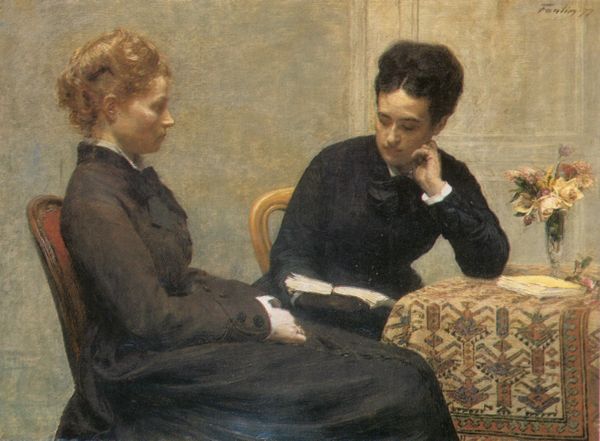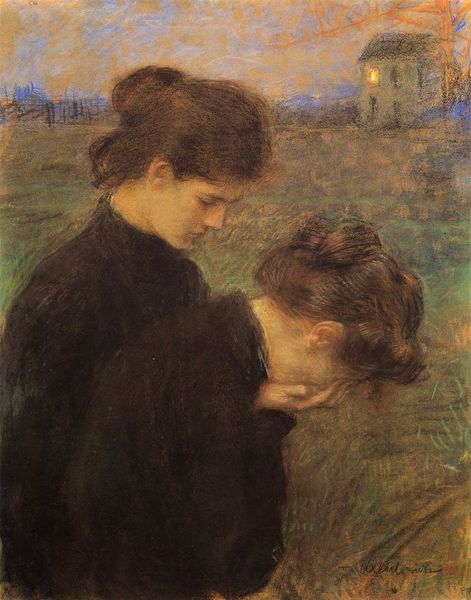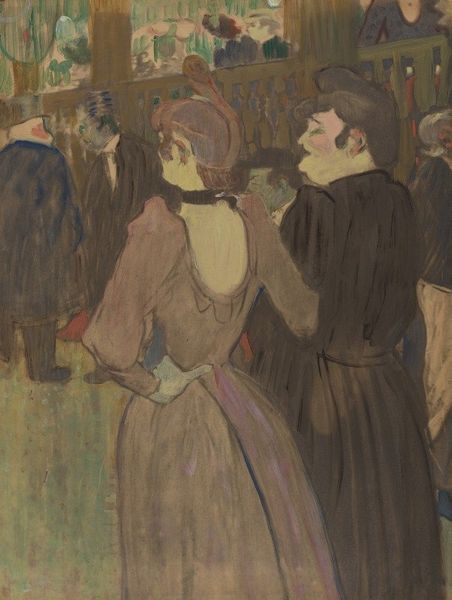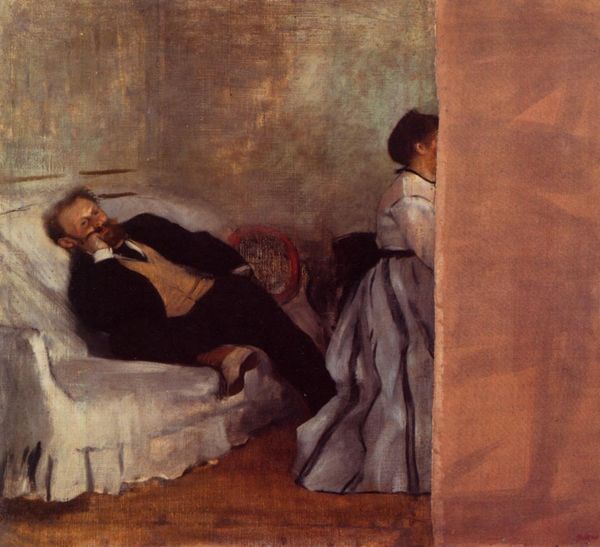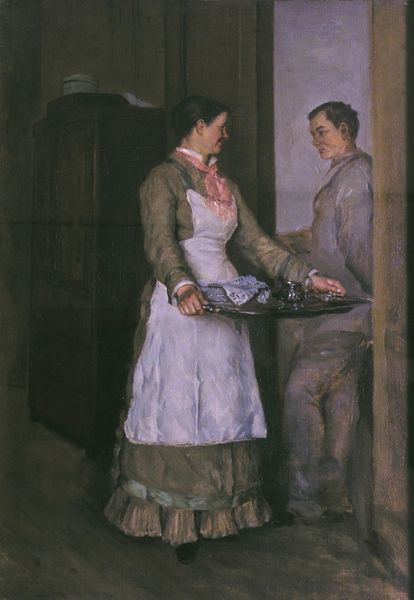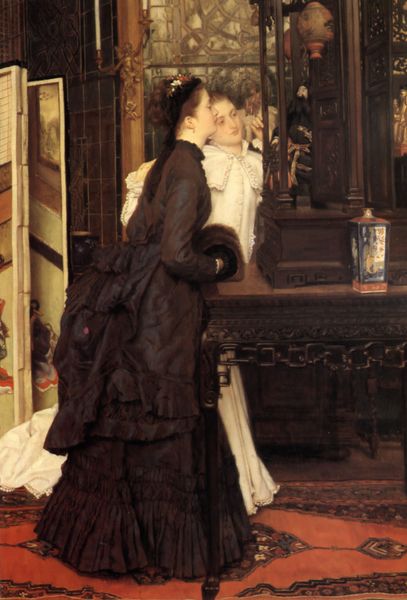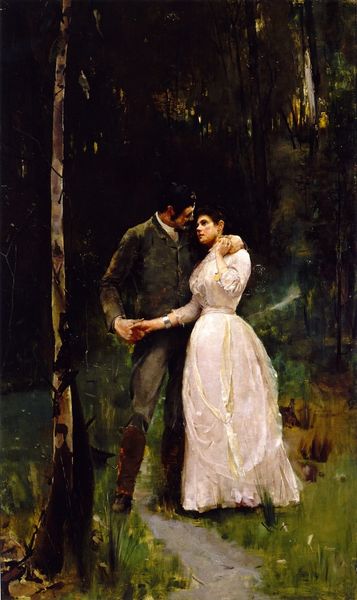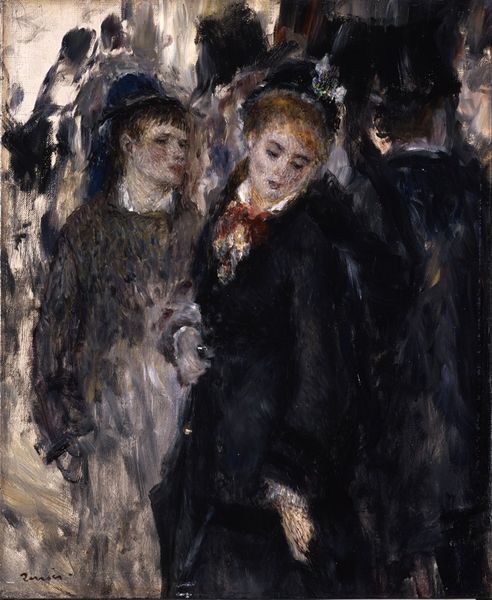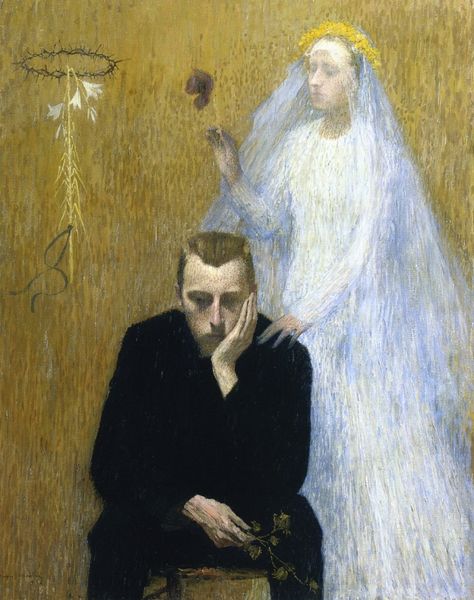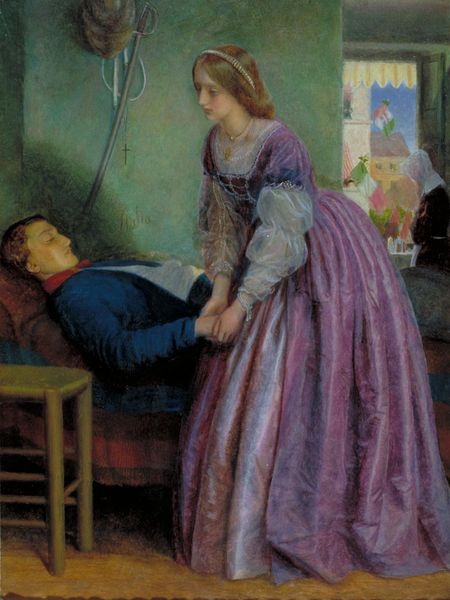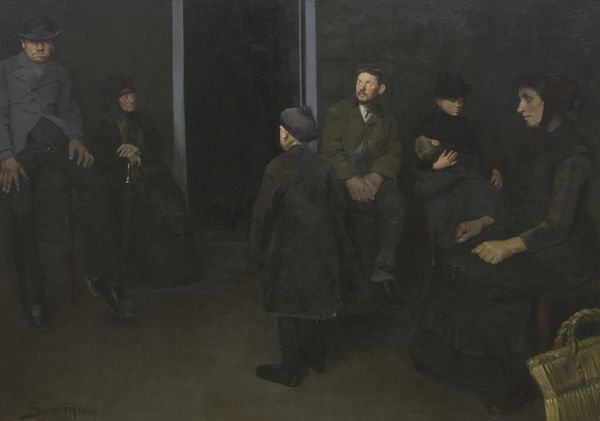
painting, oil-paint, impasto
#
portrait
#
painting
#
oil-paint
#
figuration
#
impasto
#
intimism
#
genre-painting
#
academic-art
#
realism
Dimensions: 116 x 67 cm
Copyright: Public domain
Curator: Shadows, an 1891 oil on canvas created by Émile Friant and currently held at the Musée d'Orsay, strikes me with its unnerving quietude. Editor: That's it's initial impact, too-- the way those dense, dark shadows loom behind the figures. The very strong symbolic value, particularly given the era and social constraints surrounding young women, really commands attention. Curator: Exactly. Look how Friant positions the two figures in relation to those stark shadows, rendering them almost as additional characters. The woman, dressed entirely in black, seems hemmed in by societal expectations of mourning or repression, especially given the strictures placed upon women’s bodies. Editor: The black dress definitely sets a tone of restraint and even mystery. And her posture, slightly withdrawn, reinforces that. But let’s look closer. Consider the significance of the shadows’ distorted forms – could they also be interpreted as symbolic representations of unspoken desires and hidden aspects of the self that both figures are grappling with? Curator: That’s fascinating to consider. The man gazing upward could then represent yearning and frustration under social limitations. His upward gaze is perhaps seeking a more authentic, equal connection, even rebellion. Friant paints them in the mode of bourgeois Realism, which brings a very important gendered and economic analysis to our reading. Editor: Absolutely. Their intertwined hands are interesting. Friant is clearly indicating both yearning and a deep connection despite their constrained circumstances, their visual narrative really leans into that intimacy through the clasped hands—a universal symbol of both connection and sometimes, imprisonment. Curator: This piece definitely resonates as a subtle indictment of social constraints on identity, class, and love during that time. The title "Shadows" could reference so many things that remained hidden from view during this period, not only relationships but the daily exploitation upon which Bourgeois Realism turned a blind eye. Editor: Yes. I find the interplay between shadow and light speaks volumes about hidden desires and societal constraints during the 19th century, offering an almost eerie visual encapsulation of cultural anxieties of the era. Curator: Indeed, Émile Friant leaves us much to think about how intimate portraits reflect cultural anxieties and hidden stories of the period. Editor: It certainly has given me a new avenue of insight to continue learning.
Comments
No comments
Be the first to comment and join the conversation on the ultimate creative platform.

